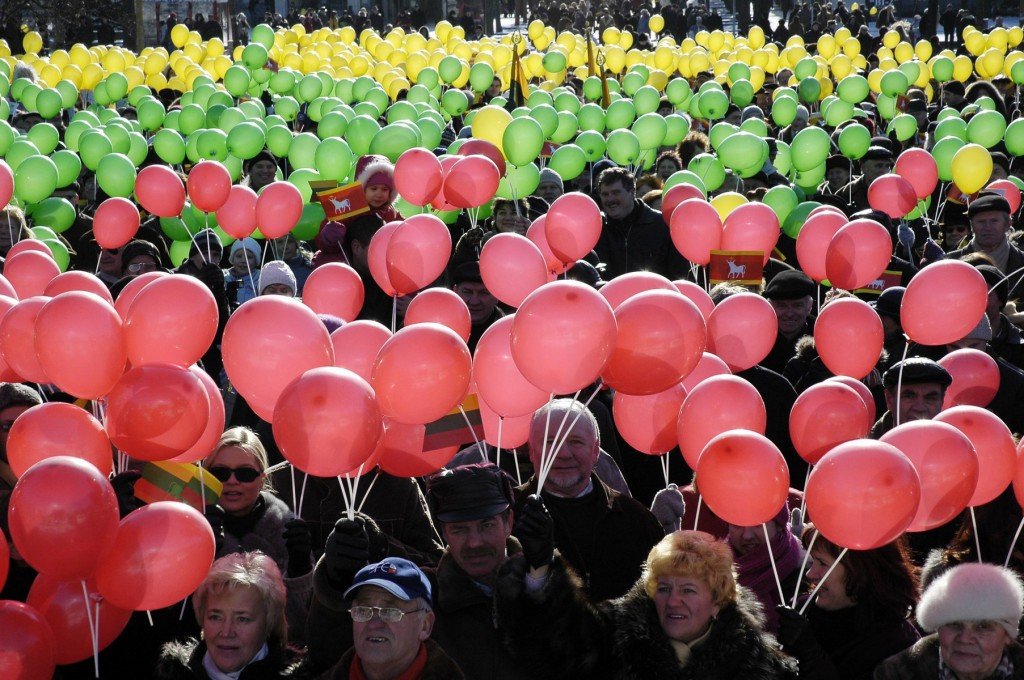Lithuanian Pensions Could Be Larger

As the populations worldwide are aging, countries are facing problems related to their pension systems and are applying different solutions. However, according to Karl Hinrichs from the University of Bremen, who has done extensive research of pension systems, the main challenge to all European politicians is to timely launch policy challenges that curb an otherwise unfettered rise of pension expenditure – no matter how painful they are.
“Those reforms are hardly popular because large groups’ interests are violated, but initiating pension reforms early gives people more time to adjust”, Karl Hinrichs says. Last autumn the scientist held a lecture series at VMU on European pension systems and reforms. He has also authored and co-authored numerous articles with prominent German philosophers and political scientists, lately focusing on pension-related issues.
Options for Pension System Reforms are Limited
“When the worker/pensioner ratio decreases, one option is increasing contributions or taxes. This would shift the burden of population aging exclusively to the younger generation. Moreover, high and rising social security contributions and taxes are said to negatively affect economic activity and the employment level”, the scholar explained.
According to Hinrichs, these issues could be evaded by way of two possible alternatives. The first one is to put the burden on present and future pensioners – reducing the level of public pensions and completely or partially eliminating adjustment of pensions in payment to inflation and/or wage increases. However, this strategy would increasingly push pensioners into poverty.
The second option is to improve the worker/pensioner ratio by raising the retirement age. “It is a quasi-natural response to increasing longevity – living longer, working longer. Of course, this strategy produces inequities as well. Not everyone can actually work until they reach a risen standard retirement age, e.g. construction workers and others who have held physically demanding jobs”, Hinrichs noted but concluded that this model nevertheless has the most potential.
“I believe that gradually increasing retirement age, linking it to the development of life expectancy, is the most promising strategy. Moreover, it helps to counter labor shortages resulting from ever smaller birth cohorts entering the labor market after schooling and training although at the moment high unemployment is the more pressing problem in a number of European countries”, the German expert said.
Assoc. Prof. Dr. Dalia Kaupelytė from the VMU Dept. of Finance emphasizes that the issue of pensions is very complicated and highly debatable. “The Lithuanian pension system marked its 20th anniversary last year, but it still has not met expectations. Reforms are necessary and their implementation is no easy task. In 2014, a research group was formed under the Ministry of Social Security and Labor, tasked with creation of a social model and the reform of the State Social Insurance Fund Board (Sodra), but it was split up at the end of the year and the deliberations of reform proposals were once again postponed indefinitely”, VMU expert said without hiding her disappointment.
“Some of the pension reform measures are already being implemented in Lithuania. The qualifying age for old age pensions is being gradually extended until it reaches 65 in 2025. Old age pensions are not inflation-linked in Lithuania. There is also the possibility to gather additional second pillar pension funds by diverting a portion of paid social insurance taxes to it”, Ramūnas Stankevičius, CEO of MP Pension Funds Baltic, commented.

Salesman and Doctor Pensions Should Differ
Experts say that pensions should differ regarding not only the accumulated years of service, but also education and job specifics. Nevertheless, a guaranteed minimum pension has to be ensured for everyone to get by.
“I believe that, first of all, a pension system should protect against poverty in old age, providing a certain percentage of average income after reaching retirement. Second, public plus private schemes should pay pensions which replace a certain percentage of previous individual earnings so that the economic status attained in working life can be upheld during retirement”, Hinrichs pointed out the first two characteristics of an arguably effective pension system.
The third feature, according to the German scholar, is that it should contain some redistribution towards those who were unable to perform a countinuous employment career and hence earned fewer pension entitlements because they were unemployed for some time, engaged in child or elderly care or became disabled before reaching normal retirement age. “In reality, the Netherlands and Denmark do best with regard to the three objectives of a pension system”, Hinrichs opined.
Assoc. Prof. Kaupelytė agrees with this and notes that the aforementioned two countries are great examples of where one can regain up to 100 percent of former income after retirement. “However, it is noteworthy that for several decades already, these countries have had private occupational pension funds where employers transfer money. We are only establishing the tradition of private pension funds, the pension funds have only been functioning for ten years and the amount of earnings transferred to them is far from what would be sufficient for a satisfactory old age”, the VMU lecturer noted.
According to Ramūnas Stankevičius, the issue of occupational pension funds is yet to gain momentum in Lithuania. “Lithuanian companies are relatively too small to have strong occupational funds, so one solution would be to establish branched occupational pension funds, whose creation would be of interest to trade unions. However, our trade unions are also not as strong as those abroad”, the head of MP Pension Funds Baltic remarked.
Multi-Pillar Pension Systems: Only Private Funds Win?
Karl Hinrichs is also familiar with the situation in Lithuania: he has researched pension systems here and in a number of other Central and Eastern European countries.
“After turning towards the multi-pillar approach in the early 2000s, the Baltic States have concluded further pension reforms – Latvia very much driven by the financial crisis, the deep economic slump and the subsequent need for international loans. The focus of recent reforms in the Baltic States has been on closing early retirement pathways and gradually raising normal retirement age. However, the target ages set remain much lower than in Ireland, Italy or Germany”, the scientist explained.
Hinrichs says that this is comprehensible, considering that further life expectancy at age 65 is shorter by about 3 years in the CEE than in Western Europe. Still, overall, the Baltics fit in the European context, which is characterized by much variation anyhow.
Many CEE countries started dismantling their multi-pillar pension systems last year. Notably, Lithuania also uses this type of system. According to Hinrichs, however, Lithuania was an exception, as participation in the second pillar was voluntary, while it was mandatory for the younger part of the workforce in Estonia, Latvia, Hungary, Poland and Slovakia.
“The adoption of the multi-pillar pension system was pushed by the World Bank in all CEE countries. This modernization strategy has largely failed: the high-flying expectations were not met, and the 2008 financial crisis has shown how risky private funded pension schemes actually are. It was foreseeable that the reduced contribution share of the first pillar would not suffice to honor the entitlements of present-day retirees and older workers”, Hinrichs commented.
The governments of almost all Central and Eastern European countries reacted: Hungary scrapped the second pillar completely, Poland first reduced the contribution rate for the second pillar, and so did Latvia. Later the second pillar was made voluntary in Poland and Slovakia, while the Czech Republic decided to do away with its voluntary second pillar, even though it was introduced only in 2013.
“The take-up rate was negligible, which hardly comes as a surprise, as the rate of return on invested pension savings is low, often below the administrative fees charged by the pension fund providers. Thus, I believe the euphoria about an enlarged role of private pensions, prevailing at the end of the 1990s, is over for some time”, Karl Hinrichs concluded.

Pension Is Not Just Social Security Payments
VMU Assoc. Professor Dr. Dalia Kaupelytė provided a different perspective. “While it is still early for an assessment of the activities of pension funds, the discussions regarding their necessity are very heated. Karl Hinrichs presents a rather strong opinion on private pension funds, even though scientific research has shown that countries with the highest pension replacement rates usually have highly developed systems of private, as well as occupational, pension funds. World Bank experts also evaluated the Baltic pension fund systems positively, and at the moment the closest attention is paid to the necessity to reform the pension system of the Lithuanian State Social Insurance Fund Board”, the scholar said.
According to the representatives of MP Pension Funds Baltic, the second-pillar pension funds earned about 4.5% annually between 2004 and 2014, exceeding the annual inflation and overcoming the effects of the 2008 financial crisis. At the moment, 1.13 million people are accumulating a second-pillar private pension, while in total the pension funds have about EUR 1.72 billion worth of property. If the payments for the second-pillar pension funds were not decreased during the crisis and if the laws were not changed more than 24 times throughout the entire period of activity, the amount of wealth accumulated in the pension funds today would be almost twice as large.
“We could follow the example of the developed European countries, by establishing occupational pension funds and encouraging additional accumulation in the third pillar, as well as the example of Estonia, where the crisis-affected lower payments into second-pillar pension funds were compensated and the average accumulated assets per person are twice as large as in Lithuania. I am certain that we can pursue a larger old-age pension only with a combination of state and private pension”, Stankevičius thinks.








